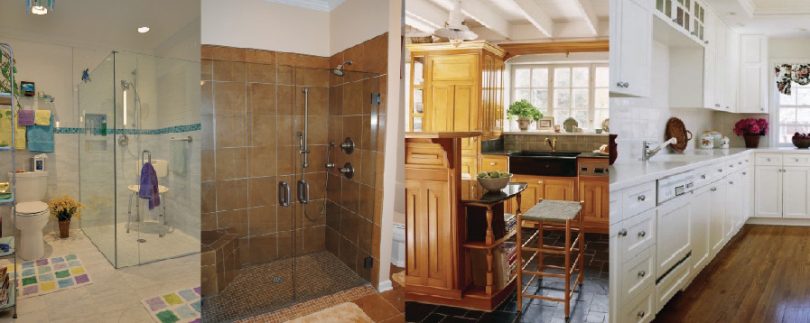It’s all about the RIGHT place.
Written by Natalie Miller Moore
Scott Maynor, a certified Aging in Place specialist with Home Enhancements, based in
Yorktown, says examples of universal design are “wider doorways and hallways, improved task
lighting and bathroom adaptations like grab bars [to prevent] falls.”
Floor transitions from room to room matter, too. “Slips, trips and falls are some of the most important things to avoid,” Maynor says. Ideally, no steps between flooring is ideal. This can be challenging in existing homes, but it can be remodeled; for example, a shower with a flush threshold, which means there is no step in between the bathroom floor and the floor of the shower.
In addition to stairs, Maynor suggests “looking at places where the flooring changes materials, say from carpet to tile, or vinyl to hardwood.”
Maynor says Home Enhancements has seen an increase in people deciding to add a first-floor master bedroom rather than move.
“Sometimes it’s due to medical issues, limited mobility or sometimes people like [the neighborhood]and want to keep their house,” he says.
Lloyd Stephens, president of Stephens Remodeling in Williamsburg, says they often encounter people seeking customized changes to suit their needs. He gives an example of a former pilot who had a stroke. “We remodeled his bathroom by widening doorways and creating a no-threshold double shower so that he could be wheeled into the shower and his wife could shower with him,” he says.
Another example was someone who became paralyzed after a skiing accident. The customer asked Stephens retrofit the home. “We added a lift and platform in the garage and removed the garage door threshold,” Stephens says.
Investigating universal design can give you many ideas about making your home more suitable for aging in place, and there are tips for every room of the house. In the kitchen, cabinet pull-outs or heights can be modified for wheelchair accessibility. Lever-style door handles can replace doorknobs. Toilets can be raised and handrails added for easier transfer from wheelchairs. Elevators can be installed for second floor access, although this is an example of something that would be more expensive in a remodeling project.

